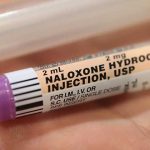- Morphine Drug Testing & Detection Times
- Factors That Influence Morphine Detection Times
- Half-Life Of Morphine
Morphine is an opiate, or natural opioid drug extracted from the opium poppy plant and used to relieve moderate to severe pain, including both acute and chronic pain.
Like other opioid painkillers, morphine is a schedule II controlled substance with a high potential for abuse. It can be detected in drug tests for certain amounts of time after your last dose, including up to three days later in a urine test.
Morphine Drug Testing & Detection Times
Drug tests are used to determine if a person has ingested a particular substance, usually an illicit drug or controlled prescription drug. Rough detection periods for morphine and its major metabolites (morphine-3-glucuronide and morphine-6-glucuronide) are as follows:
- blood tests, 12 hours after last dose
- saliva tests, up to 4 days after last dose
- urine tests, up 3 days after last
- hair follicle testing, up to 90 days later (hair tests are less reliable than other tests)
Factors That Influence Morphine Detection Times
Other factors that can influence the time that it takes for the body to process morphine and be detected on drug tests, include:
- overall health and metabolism
- age
- weight/body mass
- how often morphine is used and in what dosage
- history of morphine use
- hydration level
- how the drug is used, whether orally or through injection
- the form of morphine (immediate-release or extended-release tablets)
- if other substances, including alcohol and other opioids, are used in combination with morphine
Half-Life Of Morphine
A drug’s half-life is the amount of time it takes the body to eliminate one-half of the remaining dose of the drug. Morphine, a short-acting opioid, has a half-life of around 2.5 or 3 hours.
It takes around 4-5 half-lives to effectively eliminate a drug from the body, which means that a particular dose of morphine can be cleared between 3-7 hours after it is taken.
How Long Morphine’s Effects Last
The effects of morphine can be felt within around 30 minutes when tablets or capsules are taken by mouth, and peak at around 60 minutes before fading between 4-6 hours later.
Extended-release tablets take longer to take effect and last between 8-12 hours.
Morphine injections take effect almost immediately, peak around 10 minutes later, and last between 2-4 hours.
Morphine Brand Names
Because different formulations of morphine are used in a variety of different settings, the drug can be found in a number of brand name pain relief medications, including:
- AVINza
- Kadian
- Kadian ER
- Morphabond
- MS Contin
- Oramorph SR
- Roxanol
- Roxanol-T
- Embeda (morphine sulfate and naltrexone hydrochloride)
Side-Effects Of Morphine
Use of morphine (and other potent opioid analgesics) has been associated with several common side effects, including:
- constipation
- general feelings of illness
- feelings of confusion
- difficulty sleeping
- dizziness
- headaches
- muscle contractions
- tiredness and weakness
- sweating
- abdominal pain
- loss of appetite
- dry mouth
- rash or itchy skin
Long-term use of morphine (several weeks or more) is known to result in increasing tolerance towards morphine’s effects, as well as physical dependence and withdrawal symptoms.
Morphine Overdose
Morphine should never be taken in higher doses than prescribed or mixed with other central nervous system depressants including other opioid drugs, antihistamines, sedatives, tranquilizers, barbiturates, muscle relaxants, or anesthetics.
Doing so can lead to a morphine overdose and life-threatening effects, which can include:
- bluish fingernails and lips
- stomach pain
- difficulty breathing
- extreme sleepiness
- pinpoint pupils
- nausea and vomiting
- seizures
- coma
Morphine Abuse & Addiction
Unfortunately, morphine is known to have a high potential for abuse, often resulting in morphine addiction and long-term effects relating to:
- physical and mental dependence
- declining mental health
- increasing drug use
- behavioral changes
- liver and other organ damage
- memory effects
- morphine withdrawal symptoms like drug cravings and agitation
Morphine extended-release tablets are often crushed, increasing their effectiveness and potentially allowing them to be injected, However, tamper-resistant medications have been developed to either make the tablets harder to pulverize or to block their effects using an opioid antagonist (naltrexone).
Morphine Addiction Treatment
Opioid addiction treatment programs are available on an inpatient or outpatient basis and may include medical detox services for stabilization during withdrawal.
Other substance abuse treatment services include peer support groups, behavioral therapy, and holistic activities like yoga and meditation. To find out if our outpatient programs will work for you or a loved one, please contact Northeast Addictions Treatment Center today.
Sources
Written by
Northeast Addition Editorial Team
©2024 Northeast Addition Center | All Rights Reserved
This page does not provide medical advice.







